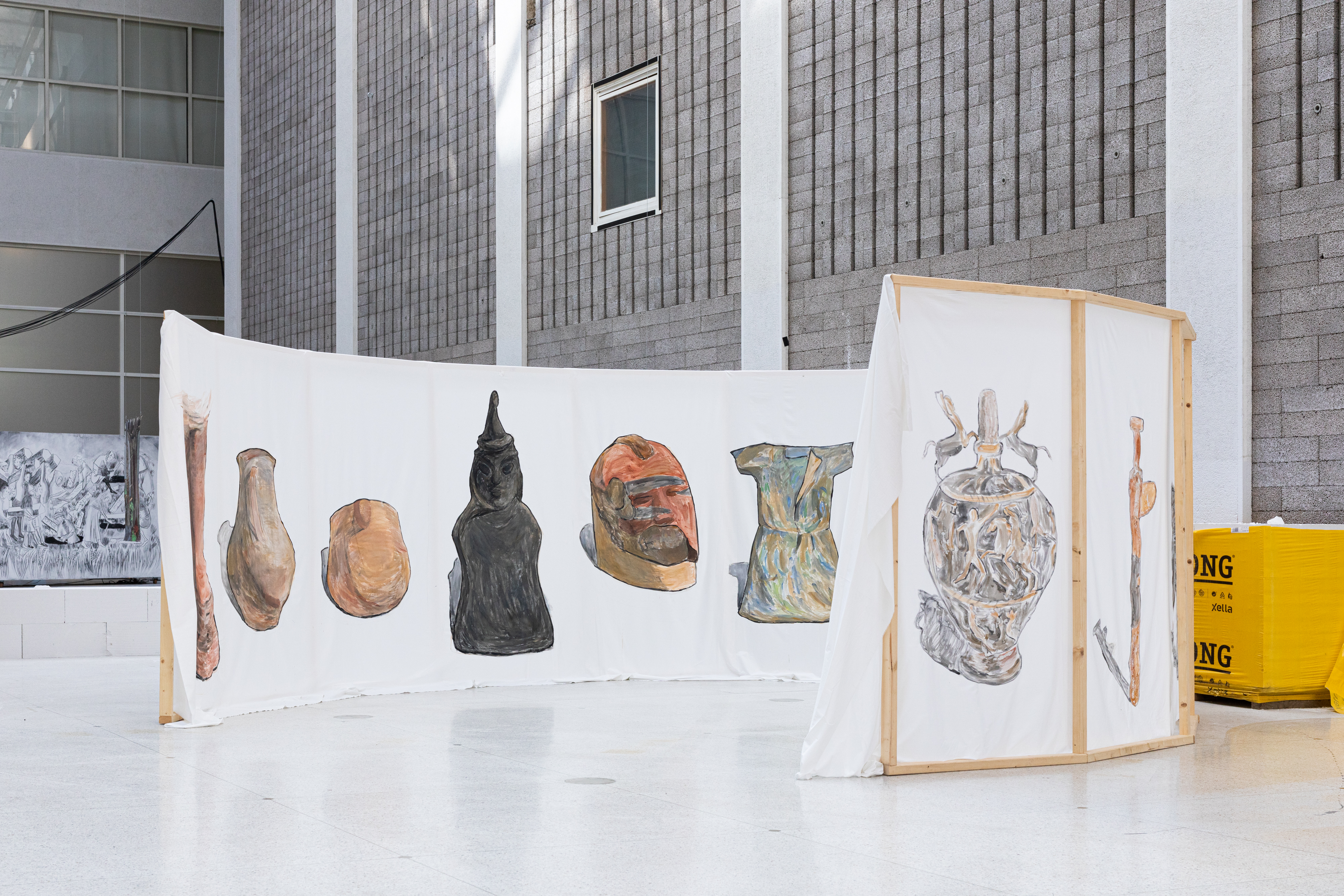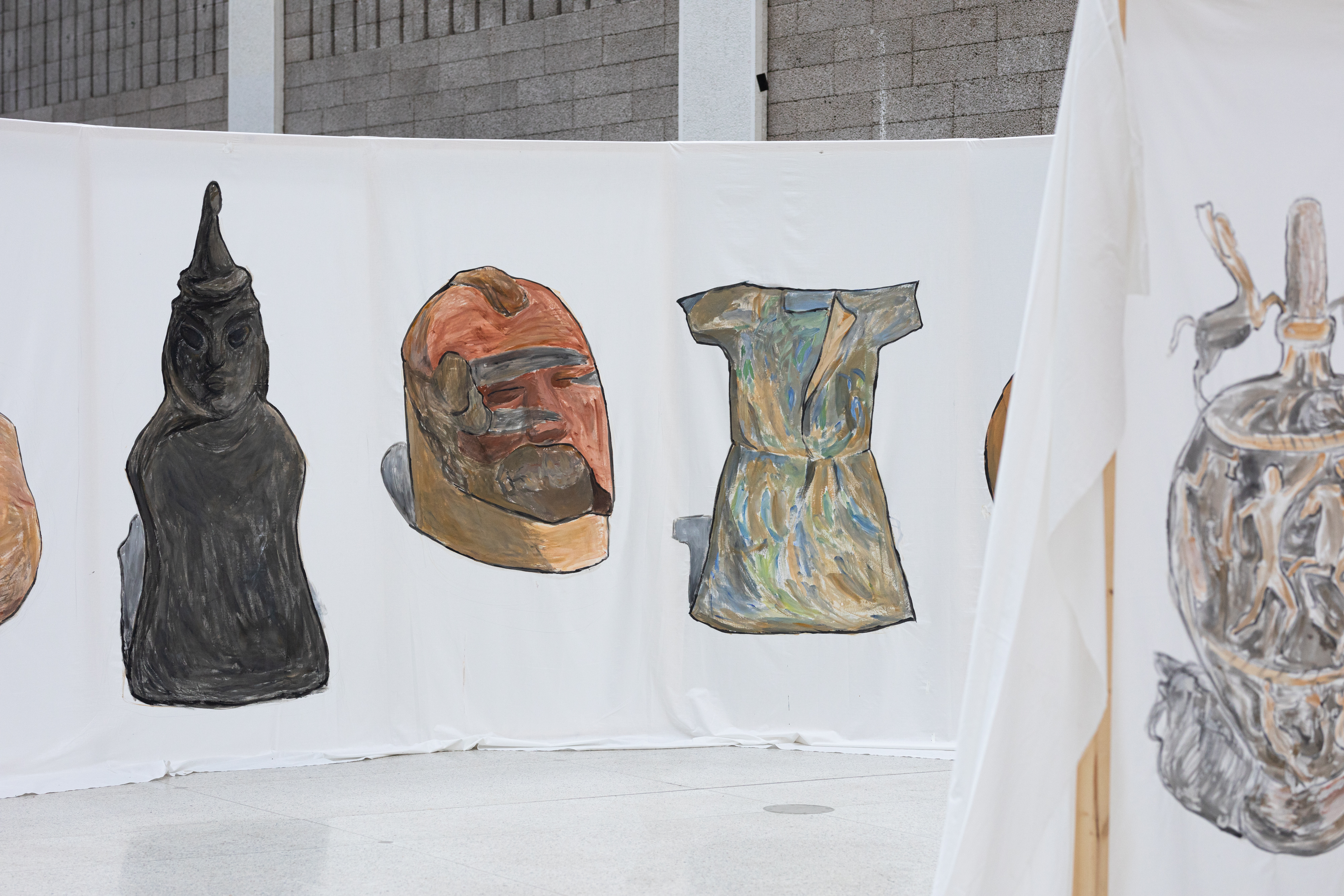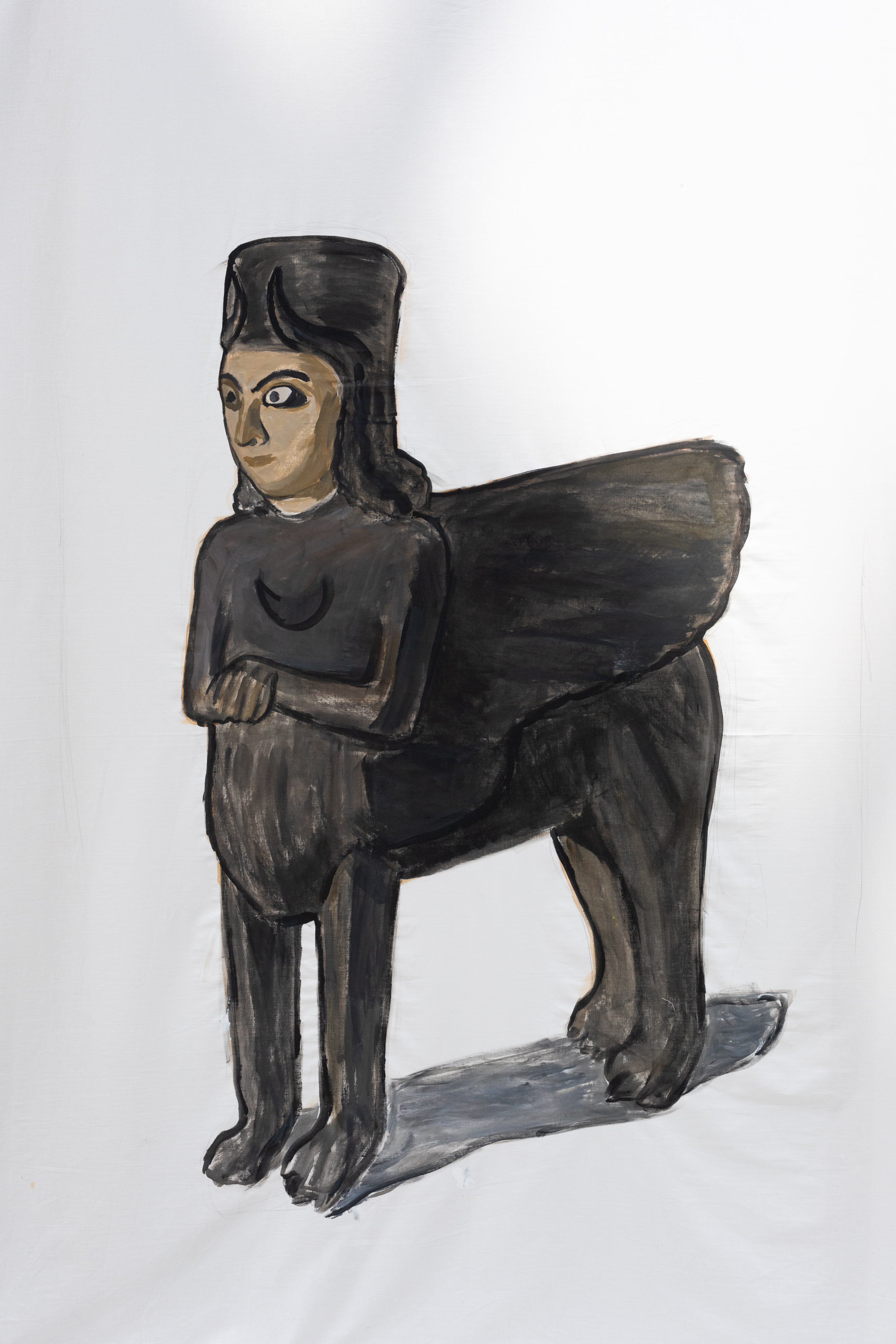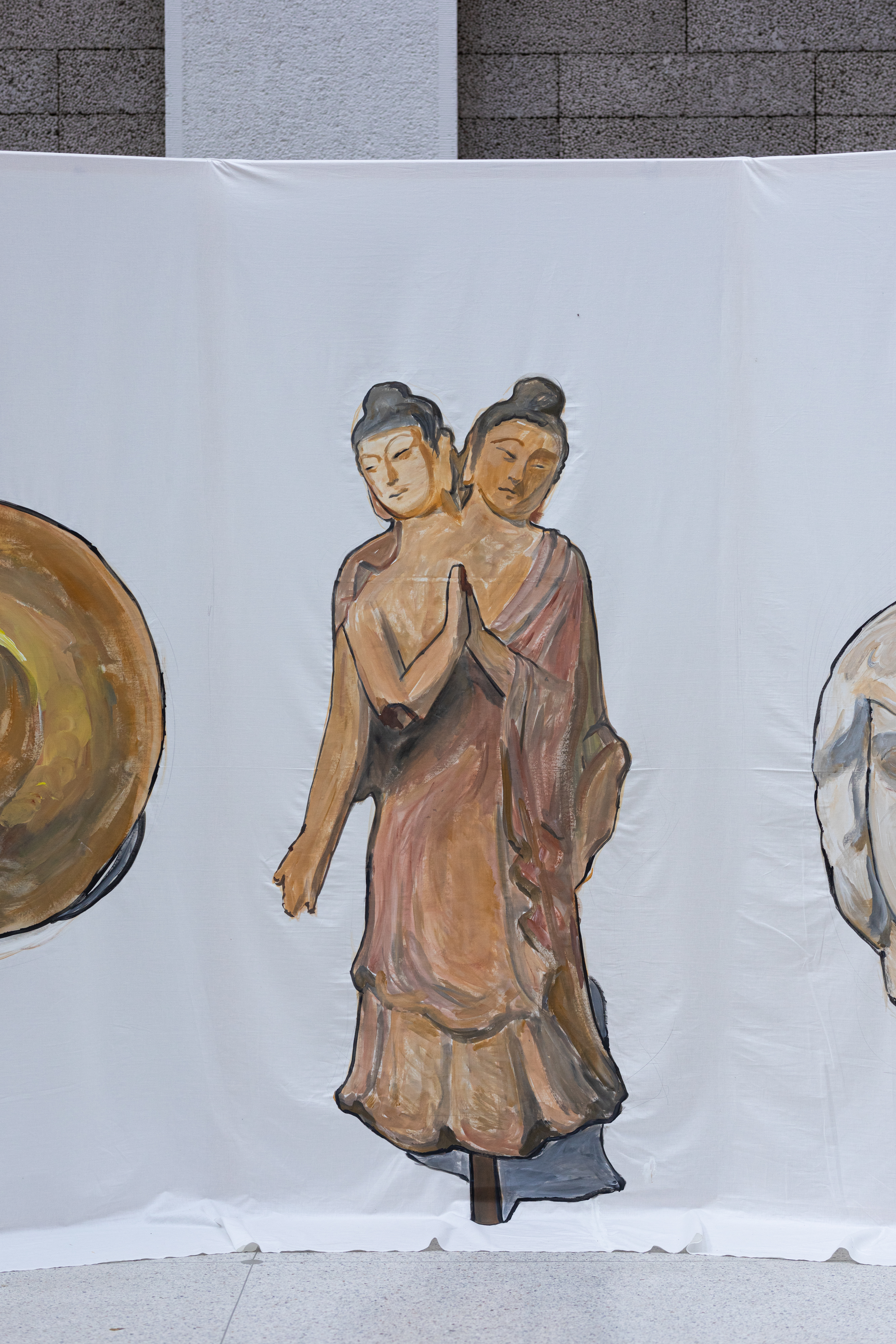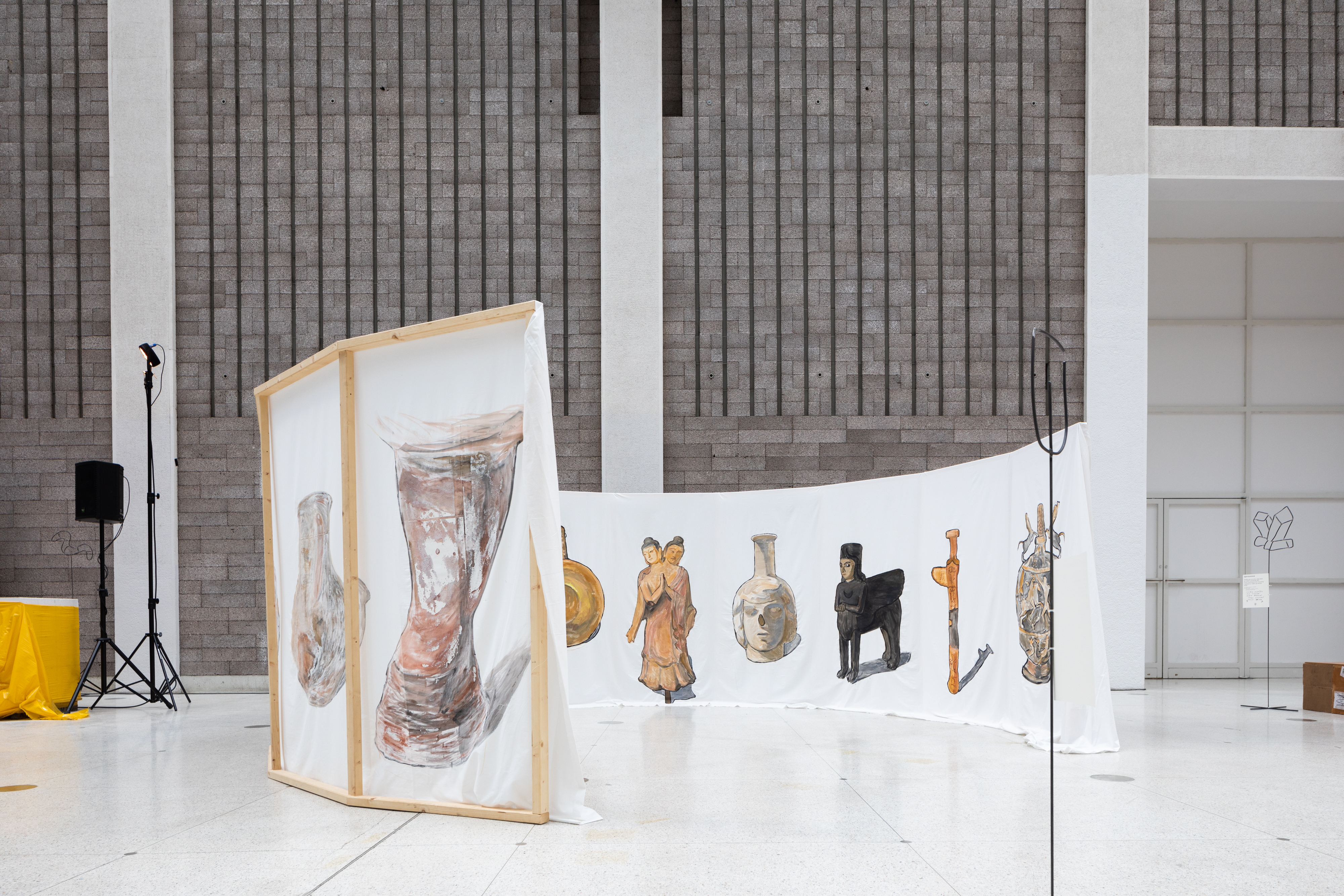Kateryna Lysovenko
Work exhibited in the Trade Fair Palace:
Bronze tripod leg, 11–12th centuries (Place of find: Southern Kazakhstan, Taraz; Year of admission: 1940; Department/sector: Central Asia, the Caucasus and Crimea); jug, 3rd century AD (place of discovery: USSR, Brest region, Brest district, village of Trishin, Year of admission: 1963; Department/sector: Archeology of Eastern Europe and Siberia); Vessel with a tubular drain, 3rd–5th centuries BC (Place of find: Southern Kazakhstan, archaeological Kazakhstan, archaeological site: Berkkara); Fragment of a figurine, 2nd millennium AD (Place of find: Caucasus, Dagestan; Year of admission: 1924; Department/sector: Central Asia, Caucasus and Crimea); A mask made on a man’s head over 3–4 inch green silk fabric placed on his face, AD (Place of find: Republic of Khakassia, archaeological site: Oglakhty; Year of receipt: 1969; Department/sector: Archeology of Eastern Europe and Siberia); Kaftan covered with Syrian silk with “senmurvs”, 9th century (Place of find: Caucasus, Karachaevo-Cherkessia; Year of receipt: 1970; Department/sector: Central Asia, the Caucasus and Crimea); Golden ladle with engraved ornament, 8th century (place of creation/school: Golden Horde, archaeological site: Tsarevskoe settlement; Department/sector: Central Asia, the Caucasus and Crimea); Flacon (archaeological site: Chersonesus; Year of admission: entered the Hermitage in 1900, transferred from the Imperial Archaeological Commission); Detail of a throne, 7th century BC (place of creation/school: Urartu; Year of admission: 1885; Department/sector: Ancient East); Upholstery of a sword sheath, 7th century BC (Place of find: Kherson province, Elisavetgrad district, Elisavetgrad, archaeological site: Cast Kurgan [Melgunovsky treasure]; Material/technique: gold, leather, mastic, plastic; Size: length 43.3 cm, width: 12.1[max], width: 2.8 cm [min]; Year or admission: 1763; Department/sector: Archeology of Eastern Europe and Siberia); Vase with relief mythological scenes, with two handles in the form of centaurs, second half of the 4th century BC (Place of find: Moldavia, Contesti; Year of admission: 1841; Department/sector: Archeology of Eastern Europe and Siberia) in the Hermitage Museum inviting a discussion on who owns the past. / 2023–2024 / installation / courtesy of the artist
* Commissioned by the Biennale Matter of Art Prague.
Archaeological artefacts stolen and brought to the Hermitage Museum during the Russian monarchy, the USSR and modern Russia, inviting a discussion on who owns the past, 2023–2024, Biennale Matter of Art 2024, National Gallery Prague – Trade Fair Palace (c) Jonáš Verešpej
The paintings of Kateryna Lysovenko (lives in Kyiv, b. Kyiv (Ukraine), 1989) are light and sometimes disturbing. In her paintings she depicts landscapes that become wounds, mythical creatures that protect their environments and children, figures with both masculine and feminine characteristics that rest and read in shelters. Kateryna paints war and brutal scenes. She refers to the history of human violence, betrayal, and sacrifice. At the same time, many of her works create safe spaces for learning, care and support. The border between peace and war is very fragile. In her paintings, not only humans, but also objects have a life of their own – they speak, they travel, they kill or protect. In the new installation she puts into conversation objects from the Hermitage museum in St. Petersburg in Russia. They come from various cultures and histories that have been colonized by the Russian Empire. Someone stole them or bought them fraudulently. They ended up in the imperial collection, far from the places of their origin. During the wars, as for example during the ongoing Russian invasion against Ukraine, thousands of them were stolen or simply destroyed. Now they are not even exhibited, or if so – they become symbols of imperial domination. For them the museums are like prisons. Kateryna Lysovenko paints these objects – a vessel from Kazakhstan, a figurine from Dagestan, a tool from Ukraine – and brings them together. She puts them face to face with each other and to the visitors of the exhibition. What story do they share? Do they want to go back home? How can they be free?
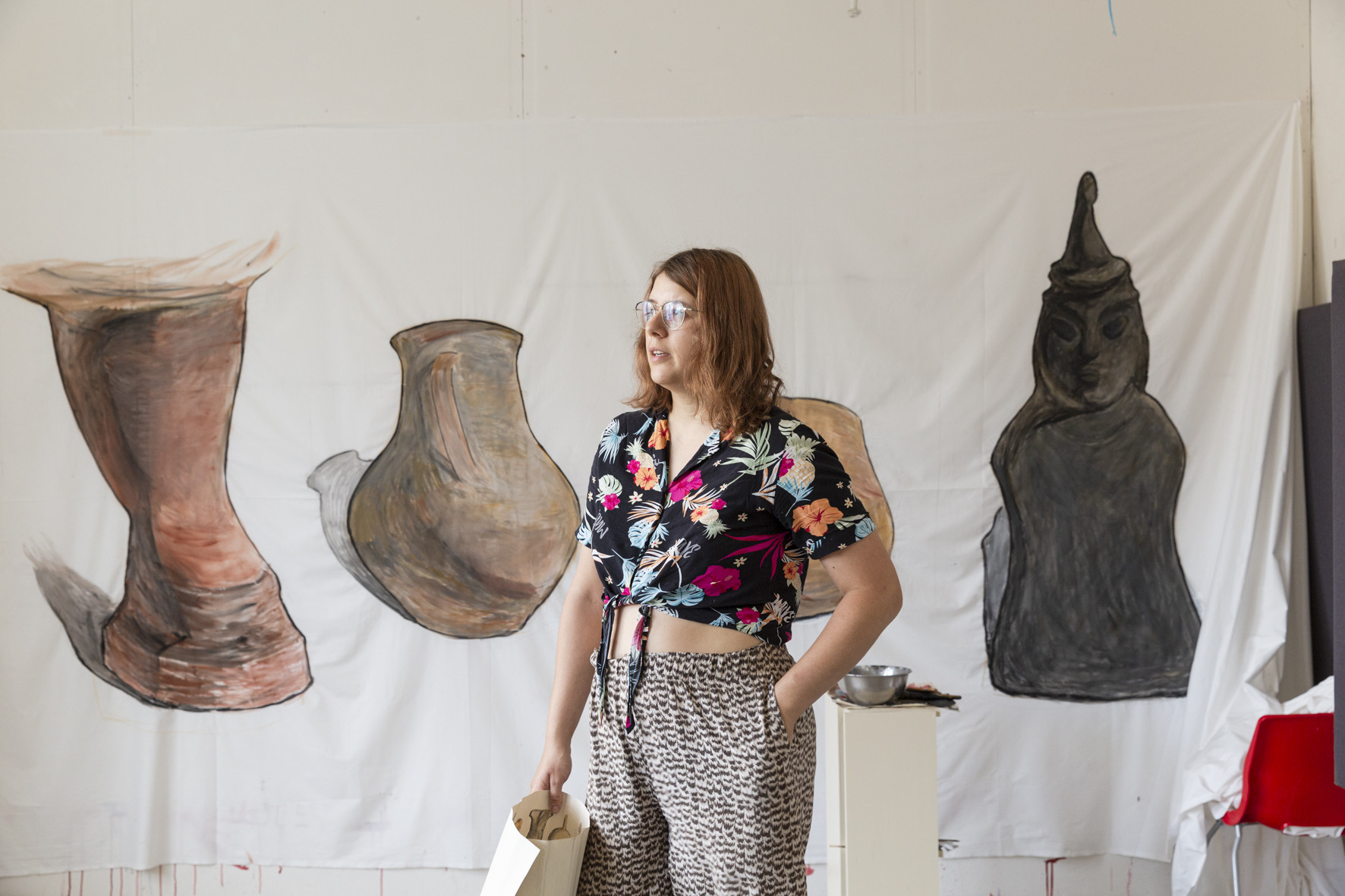
Kateryna Lysovenko during her residency for the Biennale Matter of Art @ MeetFactory, August 2023 (c) Tereza Havlínková
Kateryna Lysovenko studied at the Grekov Odessa Art School from 2008 to 2013 and then from 2013 to 2018 at the National Academy of Fine Arts and Architecture in Kyiv, graduating with a bachelor’s degree. Her primary media are monumental painting, painting, drawing, and text. Lysovenko studies the relationship between ideology and painting and the production of the image of the victim in politics and art, from antiquity to the present day. She views painting as a language that can be instrumentalized or liberated. Before the full-scale invasion of Ukraine, she lived and worked in Kyiv, but she is now based in Vienna and is studying at the Academy of Fine Arts Vienna.
Kateryna Lysovenko completed artist residencies in Prague in 2023 and 2024, as part of the Biennale Matter of Art 2024, which was funded by the European Union – NextGenerationEU.
